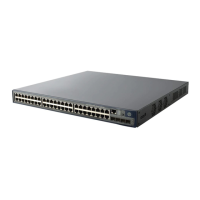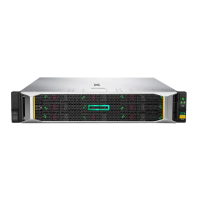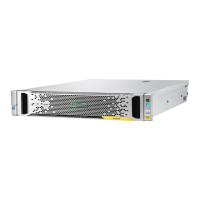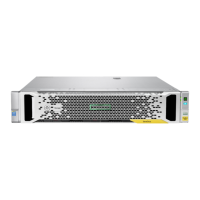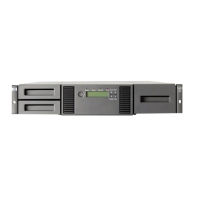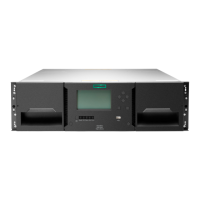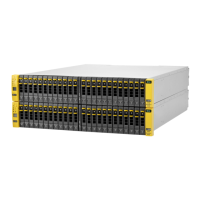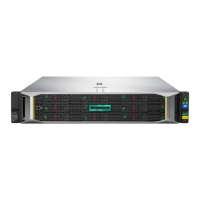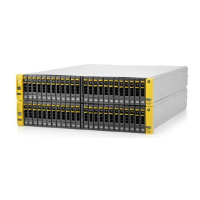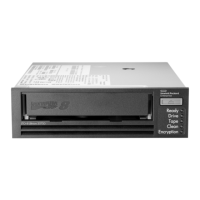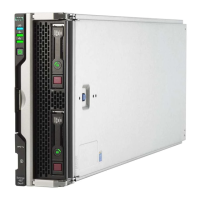5. Connect DP-2 on the I/O module in slot 2 of the third drive enclosure to DP-1 on the I/O module in slot
2 of the second drive enclosure.
6. Connect DP-2 on the I/O module in slot 2 of the second drive enclosure to DP-1 on the I/O module in
slot 2 of the first drive enclosure.
Bonded interface configuration
The SV3200 provides highly available Ethernet and Fibre Channel Interfaces.
The 1GbE MGMT interface has a single connection on each controller, but an internal switch provides
network availability if a network path fails. The 1 GbE, 10 GbE, or 10GBASE-T physical network
interfaces on each controller must be bonded into a single logical interface for high availability and
performance. The storage system will have two bonds, one bond on each controller.
The Fibre Channel interfaces do not require bonding, but need a multipath driver on the host to recognize
the different paths and to select the path for data transfer. Hewlett Packard Enterprise does not provide a
multipath driver for Fibre Channel configurations, so use the native multipath drivers that are provided
with the operating system.
The host must use two or more different interfaces to ensure that there are multiple network or SAN paths
to the storage system from the host. For iSCSI configurations, the host must have two Ethernet ports
capable of accessing the StoreVirtual 3200 bonded interface to facilitate the transfer of iSCSI data
between the host and the array. For Fibre Channel configurations, the host must have two Fibre Channel
ports zoned to have access to the StoreVirtual 3200 storage controllers.
Using bonded interfaces provides the following benefits:
• Helps prevent routing issues.
• Distributes the outbound network traffic across all the physical interfaces.
When planning your network configuration, the following requirements ensure that bonding will be set up
correctly:
• All physical interfaces on the same controller and subnet must be bonded to create a single logical
interface.
• Only interfaces on the same controller are bonded. There is no bonding between controllers.
• Bonds can be created between two or four interfaces that have the same speed. There is a maximum
of two 10GbE/10GBase-T interfaces or four 1GbE interfaces in the same bond.
• A bonded interface requires a static IP address; you cannot use a DHCP address.
• When the bond is broken, the IP address used for the bond cannot be on the same physical interface
as the DHCP reservation.
• Symmetric ports of the same type can share a subnet mask across Controllers 1 and 2.
Information needed for Configuration Setup
Configuration Setup includes setting up bonded interfaces. Collect the following information and have it
available when you begin the process.
44 Bonded interface configuration
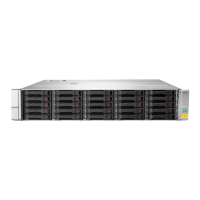
